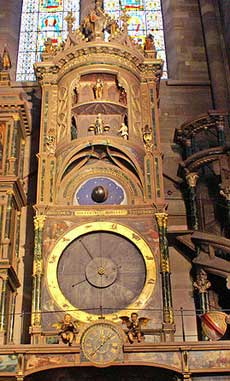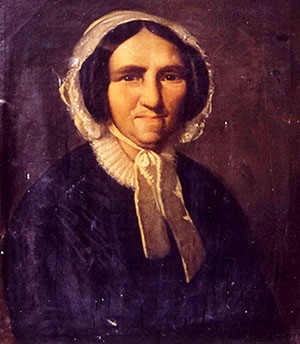
Who Was Jean-Baptiste Schwilgue?
Born Jean-Baptiste Sosime Schwilgue in December 1776, Jean-Baptiste Schwilgue was the original architect of the third (3rd) astronomical clock situated in Strasbourg Cathedral. The Strasbourg astronomical clock was built between 1821 and 1843, as opposed to the year 1842 inscribed on the clock.
After creating the Strasbourg astronomical clock, Jean-Baptiste went ahead to create several other clocks for church towers. However, the only surviving clock amongst all that he created in Strasbourg is that of Saint Aurelia’s Church, Strasbourg.
Jean-Baptiste Schwilgue died on December 5, 1856, at the same place he was born, Strasbourg, France.
Early Life
Jean-Baptiste Schwilgue was born on December 18, 1776 in Strasbourg, France, in a house located at the intersection of Rue Brûlée and rue la Comédie (Luxhof). Jean-Baptiste was the second son of the civil servant François-Antoine Schwilgue and Jeanne Courteaux.
As a boy, Jean-Baptiste showed great interest in mechanics, and with the help of the simplest tools available to him, he produced various machines and instruments, by which he made special conceivable improvements.
Jean-Baptiste Schwilgue was very fond of gazing at the Strasbourg Cathedral astronomical clock, made in the 1570s by Konrad Dasypodius, frequently examining the creation for hours, thinking about restoring it to a functioning state.
In 1789, after the outbreak of the French Revolution, Jean-Baptiste‘s father lost his position and moved from Strasbourg to Sélestat, Alsace, where Jean-Baptiste continued his studies, devoting himself, especially to mathematics. Besides his studies, he learned the art of watch-making, entering a watch-making shop as an apprentice.
Career
Phase 1
Jean-Baptiste Schwilgue was appointed official at the district’s office of Sélestat in 1807, serving as the town clockmaker and verifier of weights and measurements. He was also employed as a professor of mathematics at the local college simultaneously, which he retained until he moved to Strasbourg in 1827.
Phase 2
Jean-Baptiste Schwilgue was appointed as the Knight of the Legion of Honour in 1835. In 1853, on the report of the Minister of Education and Religious Affairs, he obtained the rank of Officer of the Legion of Honour.
What Did Jean-Baptiste Sosime Schwilgue Invent?
Invention 1

The masterpiece of Schwilgué’s life was the third astronomical clock of Cathédrale Notre-Dame de Strasbourg.
While serving as town clockmaker and verifier of weights and measurements at Sélestat, Jean-Baptiste remained preoccupied with the Strasbourg astronomical clock; around 1820, he invented a mechanical church calendar with a precise determination of the movable festivals according to the Gregorian calendar.
He brought this church calendar, of which he had created a smaller model (15×20 cm), to the French Academy of Sciences in 1821, and even presented it personally to King Louis XVIII.
As early as 1827, the clockmaker submitted a report on the condition of the third astronomical clock of Cathedral Notre-Dame de Strasbourg, as well as three proposals on how to repair it.
Popularly regarded as the third astronomical clock of Cathédrale Notre-Dame de Strasbourg, the clockmaker has, as early as 1827, submitted to the city council of Strasbourg a report on the condition of the clock, together with three proposals on the repair of the same.
The first two proposals suggested retaining certain parts of the old clock, while the third, recommended a completely new clock. The proposals were subjected to lengthy negotiations, and a decision wasn’t made until 1836. The city council of Strasbourg came to a final decision on the restoration of the clock in 1836 and was only approved by the higher administrative authority at the beginning of 1838.
As the agreement was signed in May 1838, in June, Jean-Baptiste began to work on the new clock. Together with his son Charles and his apprentices and later partners—brothers Albert and Theodor Ungerer, he was able to finish this assignment in July 1842.
On 2 October 1842, on the occasion of the 10th Congress of Sciences in France in Strasbourg, the clock was set in motion for the first time, and Jean-Baptiste Schwilgué was congratulated on all sides for the great success of the work which he had undertaken.
In November 1842, a large banquet was held in his honor, and on 31 December 1842, a grand feast with a solemn parade through the town to commemorate the fortunate prosperity of the work erected by Schwilgué.
Invention 2
In 1844 Jean-Baptiste Schwilgué alongside his son, Charles-Antoine, patented a key-driven adding machine in 1844, remarkably regarded as one of the earliest key-driven machines in the world. Here is a detailed description of the calculating machines of Schwilgué.
Jean-Baptiste Schwilgue: Marriage, Divorce, Children, and Personal Life
Marriage

Jean-Baptiste Schwilgue married Anne Marie “Thérèse” Hihn on April 25, 1976 in Sélestat. His wife, Anne Marie “Thérèse” Hihn, was a daughter of the confectioner Charles Hihn and Thérèse Baldenberger.
Children
Jean-Baptiste’s marriage with Anne Marie was blessed with eight children, three boys and five girls: Marie Thérèse, Jean-Baptiste, Charles Antoine Maximilien, Françoise, Louise, Adélaïde (Adèle), Sébastien “Alexandre,” and Marie “Clémentine” Emilie.
Tragedy
Jean-Baptiste Schwilgue lost his mother on April 13, 1784, when he was just eight (8) years old. Consequently, he remarried Marie-Anne Kauffeisen in Jun 1785.
Jean-Baptiste also had an elder brother, Charles Joseph Antoine who became a doctor and professor of medicine in Paris, but died only 33 years old on 7 Feb. 1808.

Jean-Baptiste Sosime Schwilgue died on December 5, 1856 in Strasbourg. He was aged 79 years old. His son, Charles inherited his workshop, but in 1858 he was paralyzed by a stroke and died a few years later.
